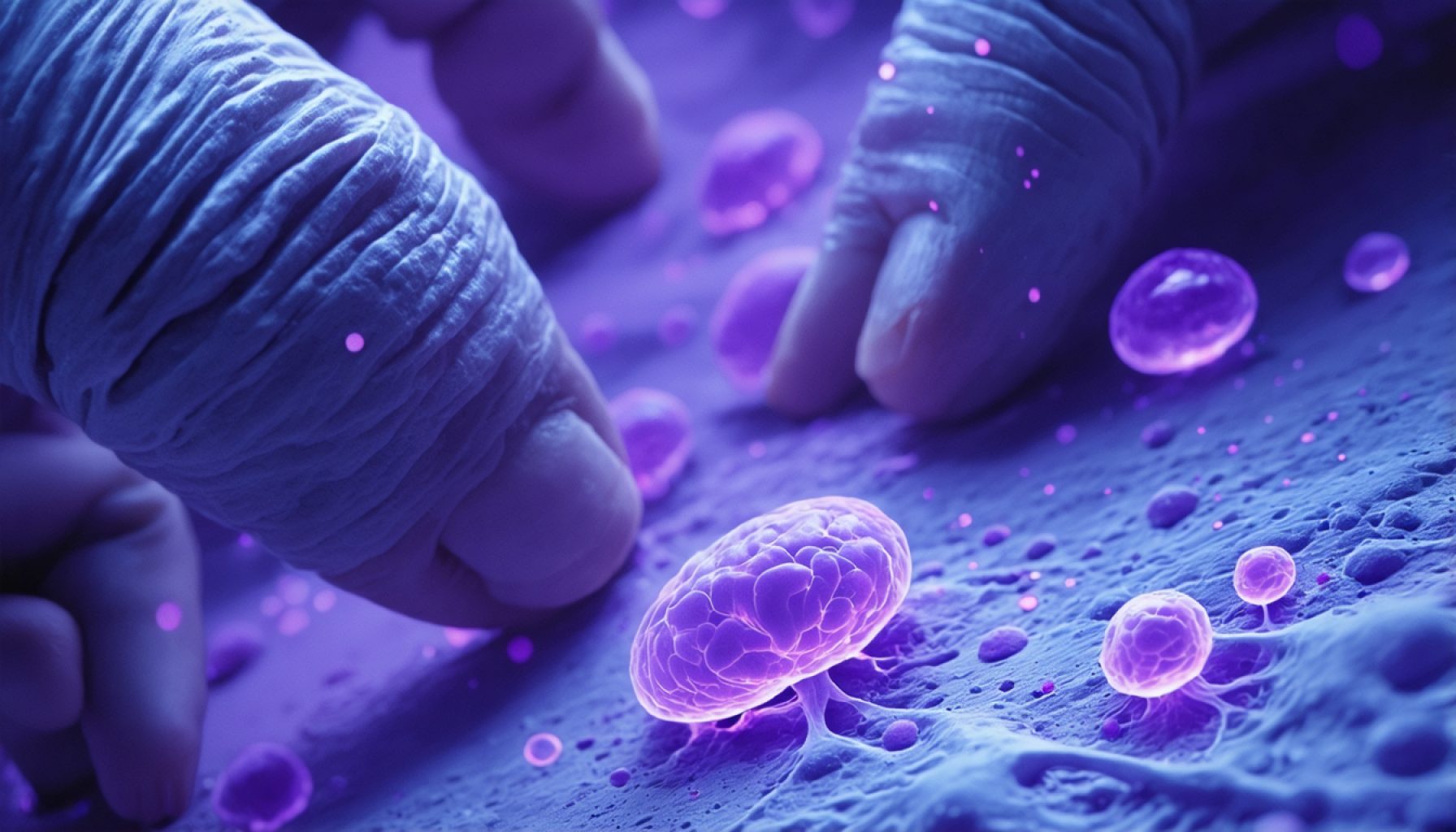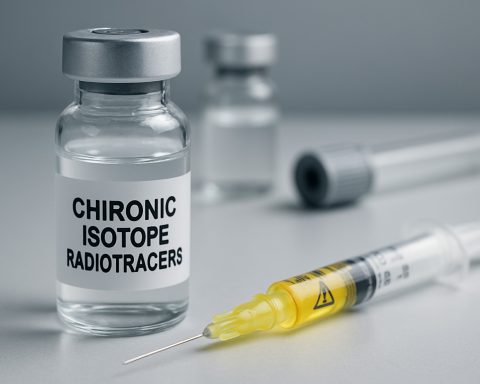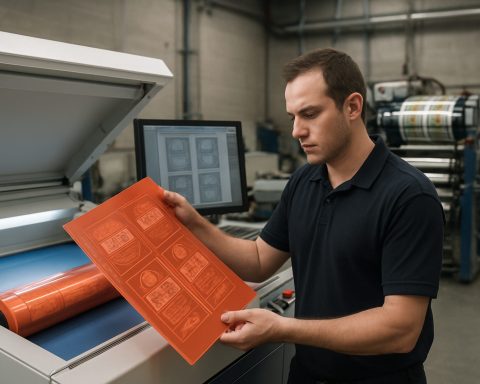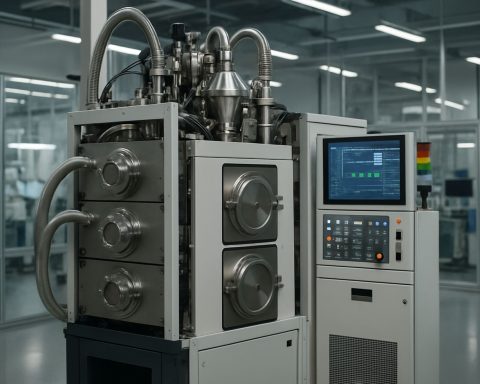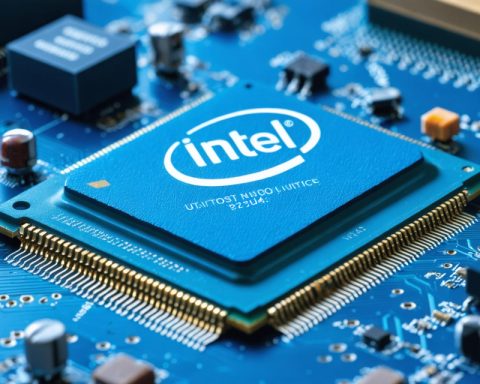- AI advancements in Hungary, led by Dr. Péter Horváth, are transforming cancer research and treatment.
- From early rudimentary algorithms, AI has evolved into a vital tool for medical diagnostics.
- Horváth’s team excelled in a 2018 image recognition championship, ranking 50th among 4,000 competitors.
- AI’s proficiency grows by analyzing millions of medical cases, revealing new insights for treatment strategies.
- Innovations include high-resolution AI microscopy paired with micro-precision laser surgery for excising cancer cells.
- Collaborative efforts with European researchers have led to breakthroughs in protein analysis linked to tumor development.
- Significant funding supports the Single Cell Centre, which integrates cutting-edge research into clinical practice.
- AI-driven personalized cancer treatment tailors solutions for prostate, lung, colorectal, breast, and melanoma cancers.
- This work signals a future of data-driven, personalized cancer therapy, marking a paradigm shift in medical intervention.
Inside a bustling laboratory in Szeged, Hungary, a quiet revolution is underway. Spearheaded by Dr. Péter Horváth and his esteemed team at the HUN-REN Szegedi Biológiai Kutatóközpont, artificial intelligence (AI) is being harnessed to unravel the intricate mysteries of cancer. These scientists aren’t merely content with theoretical musings; they are driving tangible advancements that could redefine medical diagnosis and treatment in the years to come.
Once upon a time, the application of AI in medical research involved stumbling through rudimentary algorithms that held promise but yielded meager results. Yet, the development of convolutional networks in the early 2010s sparked an AI renaissance—a leap from obscurity to a tool that now assists in everything from biological research to medical diagnostics.
In 2018, the landscape shifted dramatically during a high-stakes image recognition championship focused on cancer research. Here, Horváth’s team of seasoned biologists was pitted against nearly 4,000 rivals, scrambling to identify pathological cells under the time constraints of a ticking clock. They discovered the transformative power of AI as they transitioned from traditional methods to pioneering algorithmic solutions, allowing them to vault from the fringes to a credible 50th place.
This technological leap was fueled by AI’s insatiable appetite for data—where a doctor might see 10,000 cases in a lifetime, these algorithms ingest millions from around the globe, learning and evolving with each new input. The power of AI lies in its relentless learning, not unlike Tesla’s continuously educated self-driving cars or Facebook’s image-identifying algorithms.
But Horváth’s innovation doesn’t stop at detection. The team crafted a surgical advancement that pairs high-resolution microscopy with an AI-driven “micro CNC-laser cutter,” excising aberrant cells with micrometer precision. The extracted cell nirvanas are then subjected to rigorous genetic scrutiny to identify the mutational culprits and align them with existing pharmaceutical interventions.
Horváth wasn’t alone in his quest for deeper understanding. Esteemed European researcher Matthias Mann approached his Hungarian counterparts with a challenge that reached into the very atoms of life—proteins. Proteins are the symphony conductors of cellular activity, and understanding their composition and malfunctions could illuminate the pathways to tumor development and potentially life-saving interventions.
The resulting method, lauded on the cover of Nature Biotechnology, doesn’t just deconstruct malignancies at the genetic level; it dissects them into molecular revelations, diagnosing a disease’s unique signatures and vulnerabilities. This approach has sparked widespread scientific acclaim and is gradually stepping toward integration into everyday clinical practice.
Such groundbreaking work does not remain unnoticed in the global scientific community. Financial support from the Chan Zuckerberg Initiative, the European Union’s Human Cell Atlas, and Hungary’s National Research, Development and Innovation Office has catalyzed the establishment of the Single Cell Centre in 2023, dedicated to advancing this frontier research.
The Centre serves as a crucible for decoding the cancerous enigmas of metastasis and cellular division. Here, the digital repository contains nearly 200 million cellular “fingerprints,” maps of a patient’s clinical journey, from diagnosis to treatment efficacy. When a new sample arrives, the system swiftly retrieves its digital doppelgangers, revealing treatment outcomes that could prove pivotal.
Every day, this nuanced AI ecosystem draws closer to personalizing cancer treatment, investigating the malignant “bad actors” that defy conventional therapies and demanding resolutions tailored to an individual’s unique cellular adversary. The focus areas—prostate, lung, colorectal, breast, and melanoma—promise a future where cancer treatment is not one-size-fits-all but crafted with surgical precision and customized understanding.
The strides in AI herald a new dawn for diagnostics; data-driven and personalized, the Hungarian team believes this path marks the future of cancer therapy, one meticulously plotted sequence at a time. Though the concept of superintelligence in healthcare remains a distant horizon, today’s developments herald a new era of informed, intelligent, and impactful medical intervention.
Revolutionizing Cancer Treatment: AI Breakthroughs in Hungary
In the quiet city of Szeged, Hungary, a groundbreaking evolution in cancer research is unfolding, spearheaded by Dr. Péter Horváth and his team at the HUN-REN Szegedi Biológiai Kutatóközpont. Their innovative application of artificial intelligence (AI) in medical diagnosis and treatment is set to redefine how we understand and combat cancer.
The Role of AI in Modern Medical Research
1. AI’s Leap in Image Recognition: The early 2010s saw the advent of convolutional networks, marking the beginning of AI’s transformation from simple algorithms to complex systems capable of assisting in intricate tasks such as biological analysis and medical diagnostics. This evolution was demonstrated profoundly in a 2018 image recognition competition focused on cancer research, where Horváth’s team utilized AI to secure a notable 50th place among nearly 4,000 international competitors.
2. Data-Driven Insights: AI systems boast an extraordinary advantage over human capabilities by processing millions of data points globally. These algorithms consistently learn and adapt, providing insights into cancer diagnosis and treatment akin to Tesla’s self-learning vehicles or Facebook’s sophisticated image recognition software. Such advancements are crucial in rapidly understanding and addressing cancer’s complexities.
Innovations in Surgical Precision
The Hungarian team developed a revolutionary method combining high-resolution microscopy with an AI-based “micro CNC-laser cutter,” facilitating the removal of cancerous cells with unprecedented precision. Once extracted, these cells undergo detailed genetic analysis to uncover mutational patterns and identify potential pharmaceutical interventions.
Collaborative Efforts in Protein Analysis
The partnership with European researcher Matthias Mann has expanded the scope of innovation. By focusing on proteins—key regulators of cellular activity—the team aims to further illuminate cancer pathways. This method, recognized by Nature Biotechnology, empowers researchers by providing molecular insights that aid in personalized cancer treatment.
Funding and Future Prospects
Significant support from entities like the Chan Zuckerberg Initiative and the European Union’s Human Cell Atlas has been instrumental in establishing the Single Cell Centre in 2023. This hub of research focuses on decoding cancerous cells’ behaviors at a vastly granular level, examining nearly 200 million cellular “fingerprints” to create personalized treatment plans for prostate, lung, colorectal, breast, and melanoma cancers.
Answering Your Questions
What role does AI play in personalizing cancer treatment?
AI allows researchers to analyze massive datasets and identify unique patterns in cancerous cells, enabling the development of personalized treatment strategies tailored to an individual’s cellular profile.
How reliable is AI in cancer diagnostics?
AI’s capability to process and learn from extensive datasets makes it highly reliable for diagnosing complex conditions like cancer. It exceeds the average lifetime experiences of a medical professional, offering vast new insights.
What are the potential limitations of AI in healthcare?
Despite its advantages, AI relies heavily on the quality and diversity of data. Limited or biased datasets can impede AI’s overall effectiveness. Integrating AI into healthcare also requires robust ethical considerations and compliance with privacy regulations.
Quick Tips for Applying AI in Healthcare
– Invest in Data Quality: Ensure comprehensive and unbiased data to maximize AI’s effectiveness.
– Stay Updated on Tech: Follow advancements in AI technology to continually enhance diagnostic accuracy.
– Collaborate Across Disciplines: Engage with experts from various fields to optimize AI implementations in healthcare.
To explore more about AI applications in diverse fields, visit TensorFlow.
With these advancements, the horizon of medical intervention is expanding, enabling intelligent, data-driven, and highly personalized treatment for cancer, setting a new standard for future healthcare innovations.
